Kraków 2023-08-03
Passenger coaches type 140A A9nouz. 2023.
The history of Class 1 Standard "Y" wagons began in 1964. At that time, in Poznań, a wagon design was developed, which received the meaning of type 112A, which then turned into a whole family of wagons. Like the type 111A, the new type 112A car was based on an overall length of 24.50 m. However, the interior had 9 compartments instead of 10. Each compartment had 6 individual seats instead of couches for 8 passengers.
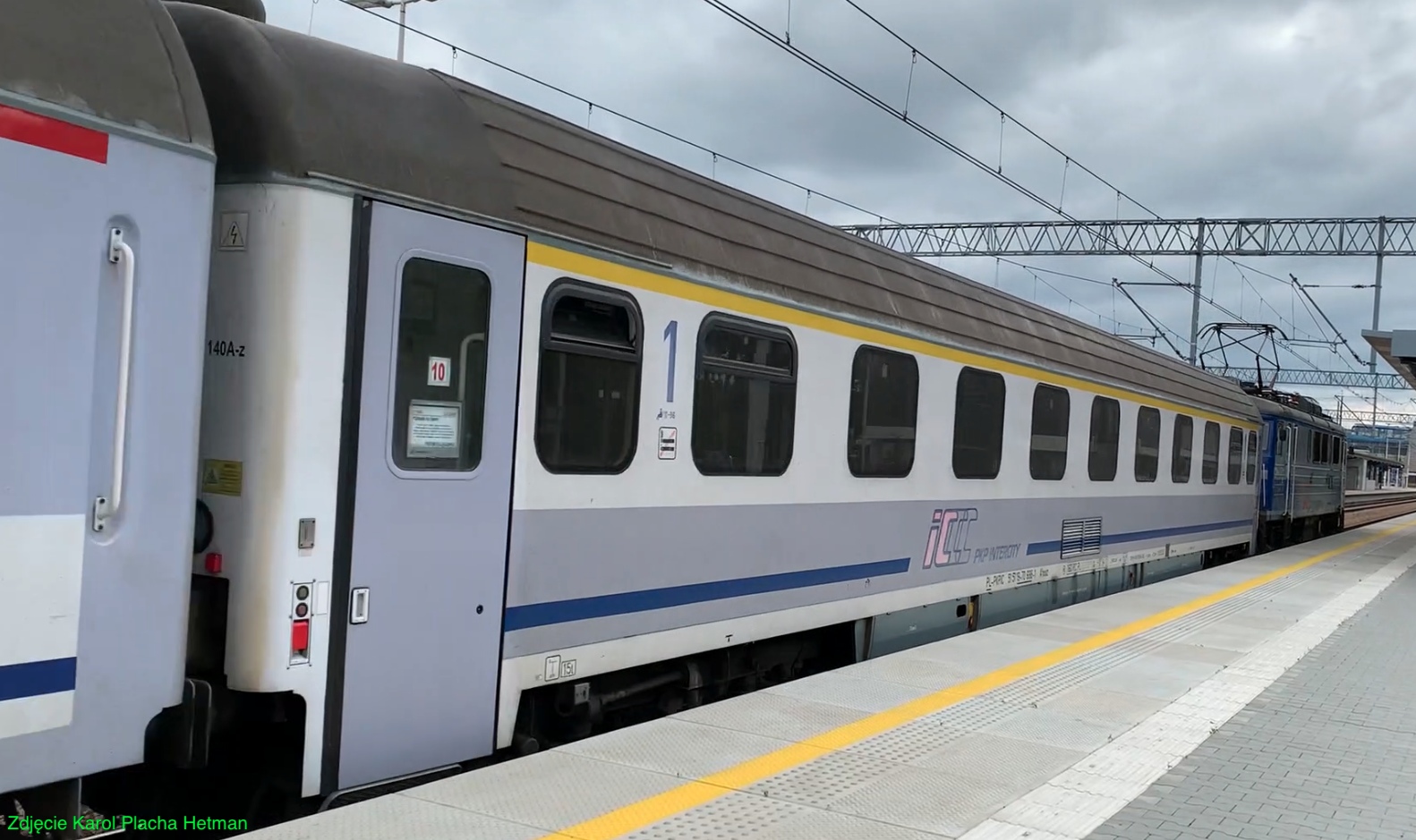
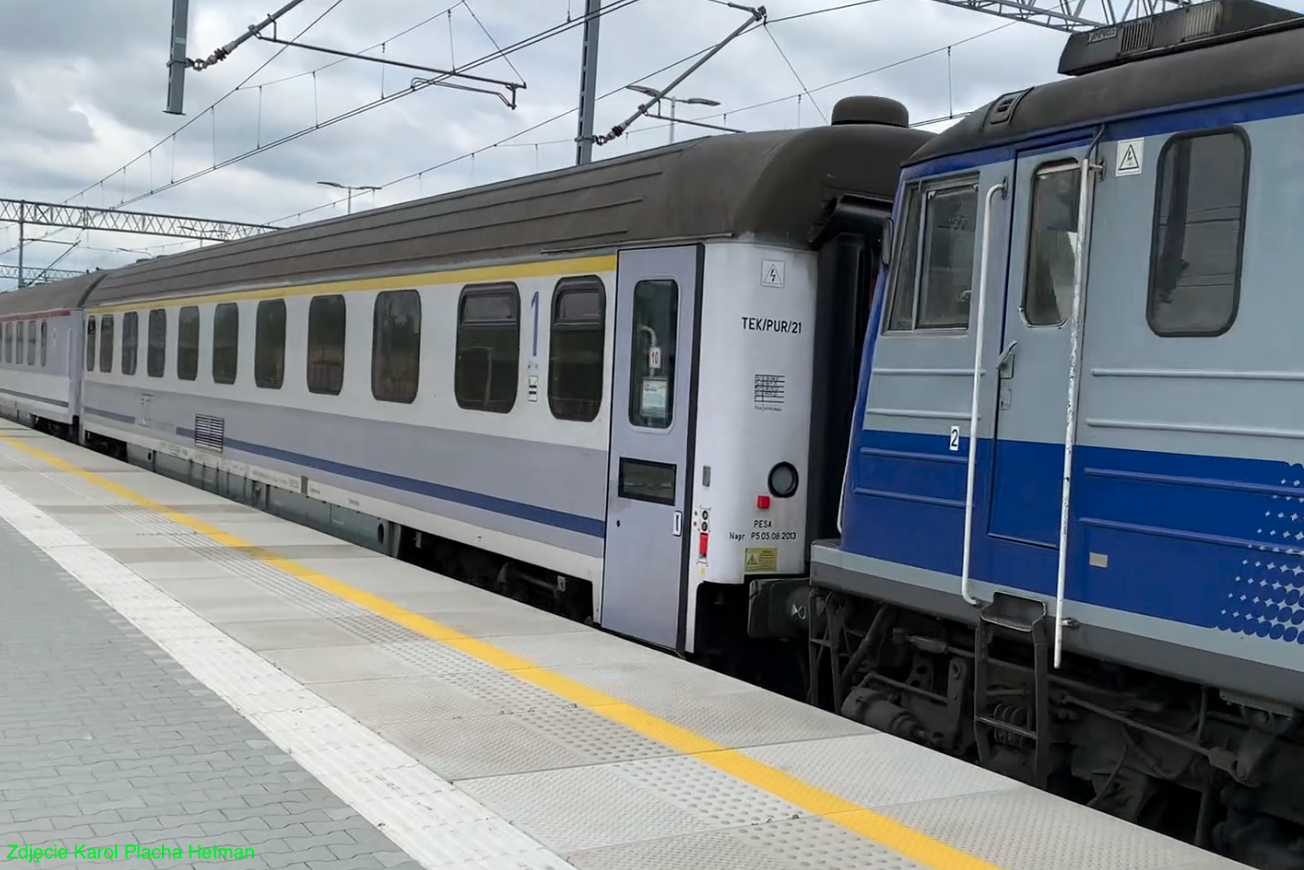
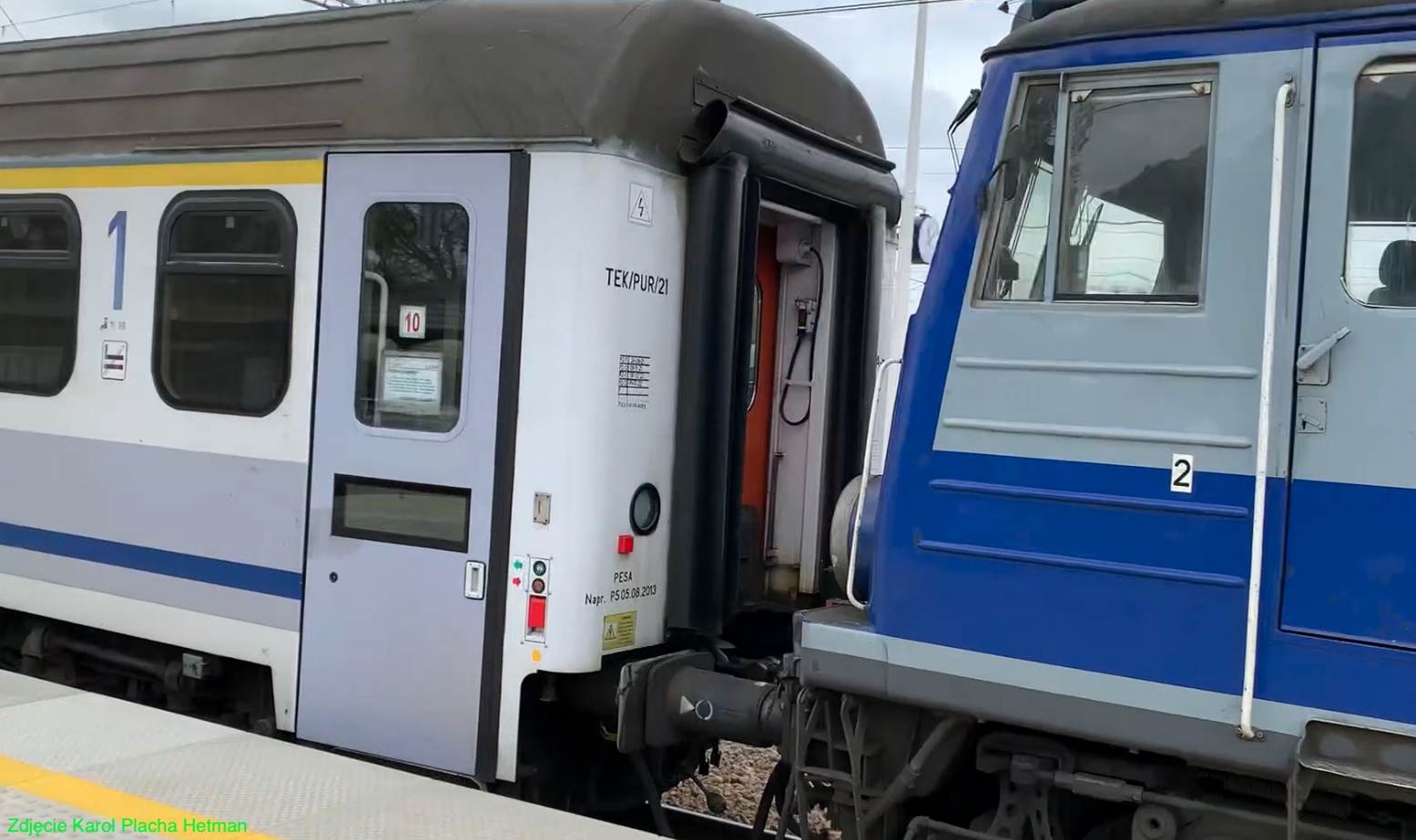
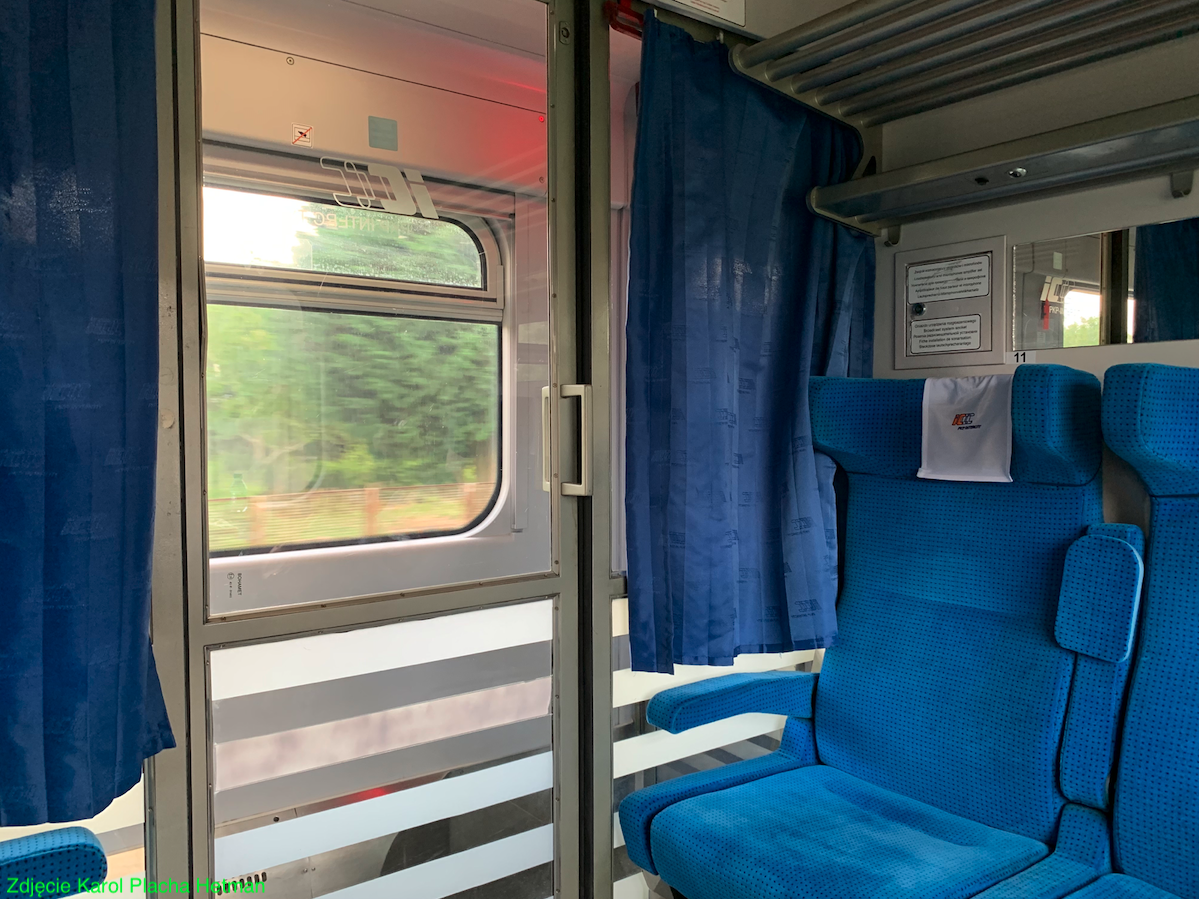
The Type 112Ad was put into production at the HCP factory. In the period 1967-1968, 64 copies were built. Then, in the period 1968-1969, 66 wagons of type 112Af were built. In the period 1978-1984, 669 examples of the 112Ag type were built. All types of wagons built so far have had steam and electric heating. The next types of wagons had only electric heating. In the period 1981-1985, 15 wagons of the 112Ah type were built. In the 1980s, type cars were still being built; 112Aj, 112Ak, 112Am, 112Ap and 112Ar. Type 112Ar was the last one built in the times of the People's Republic of Poland. In the period 1990-1991, 60 wagons of type 140A, A9dnu were built.
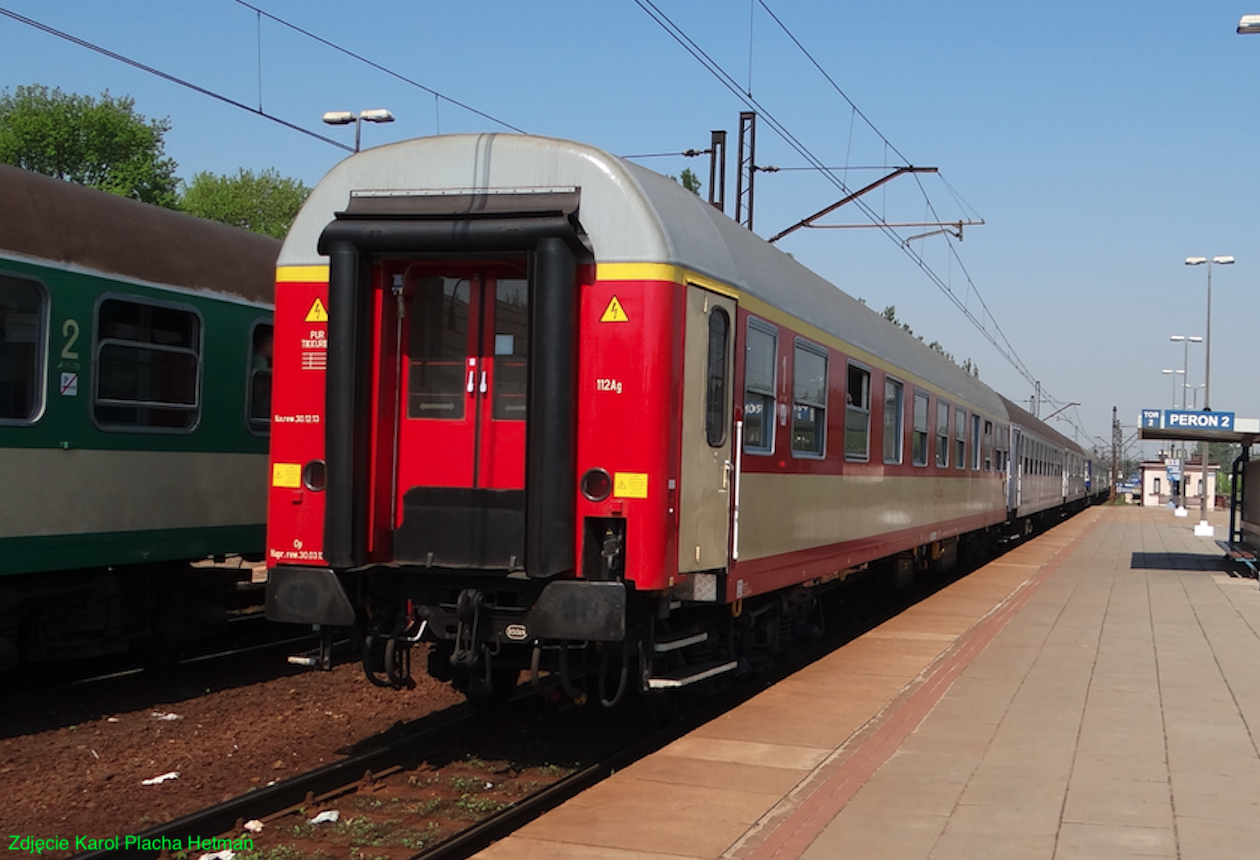
Subsequent 112A type cars were created by modernizing the already produced cars. Wagons type 112A-2, i.e. 5 wagons modernized for Przewozy Regionalne. Modernization was done in 2008.
Wagons type 112ALux. In 1997, ZNTK Nowy Sącz and ZNTK Ostrów Wielkopolski reconstructed 12 112Ag class 1 cars. They underwent a thorough modernization, equipping them with supply heating, a closed toilet system, static converters, pneumatically opened front doors, and above all, new 25AN type trolleys. These wagons were marked type 112ALux, A9nouz.
The 112At type wagons are wagons with Class 1 and Class 2 compartments.
Since the 1990s, modernization has been very thorough, often without changing the type. Of the existing wagons, only boxes and trolleys remained. The equipment, soundproofing, thermal insulation and electrical installation have been completely changed. Windows were replaced with double-glazed windows. Exterior doors were replaced with spring-and-slide doors. The internal doors were replaced with aluminum and glass doors, without laminate panels. The number of compartments and the number of seats remained unchanged, 54. Type 112A cars never had fold-out chairs in the corridor. A smaller number of compartments means that there is more legroom in the compartment, and with the number of three seats on one wall there is plenty of room for arms. There is a blue rug on the floor. Toilets were installed in a closed system, where the faeces tank was placed behind the rolling trolley, under the agon box. There is also an air conditioning system.
From the outside, type 112A wagons are distinguished by the number of windows. There are 9 large windows in each side and 2 smaller windows in the toilets and vestibules. Of course, the 112A cars have corrugated or smooth roofs, straight or folded bottom edges, a different number of roof vents, different types of handles. Some carriages have three steps at the entrances instead of two. This was due to the use of these wagons on routes with low platforms. Some types used carriages other than the standard 4ANc. The external lights of the wagon, on the fronts, are of the LED type and can emit red or white light.
Since 1999, glue-mounted windows have been used. In the period 2005-2007, 8 cars were modernized at the FPS factory. In 2007-2008, 14 carriages were modernized and received electronic monochrome passenger information screens. In 2013, 18 wagons were modernized and given the designation type 140A. In 2012, a tender was announced for the modernization of 68 wagons. In 2014, 30 wagons were modernized, which were also marked as type 140A.
Generally, modernized wagons are marked as A9nouz. The maximum speed of the 140A wagons remained at 160 km/h. The basic data of the type 140A car is the same as that of the type 111A car.
Written by Karol Placha Hetman
